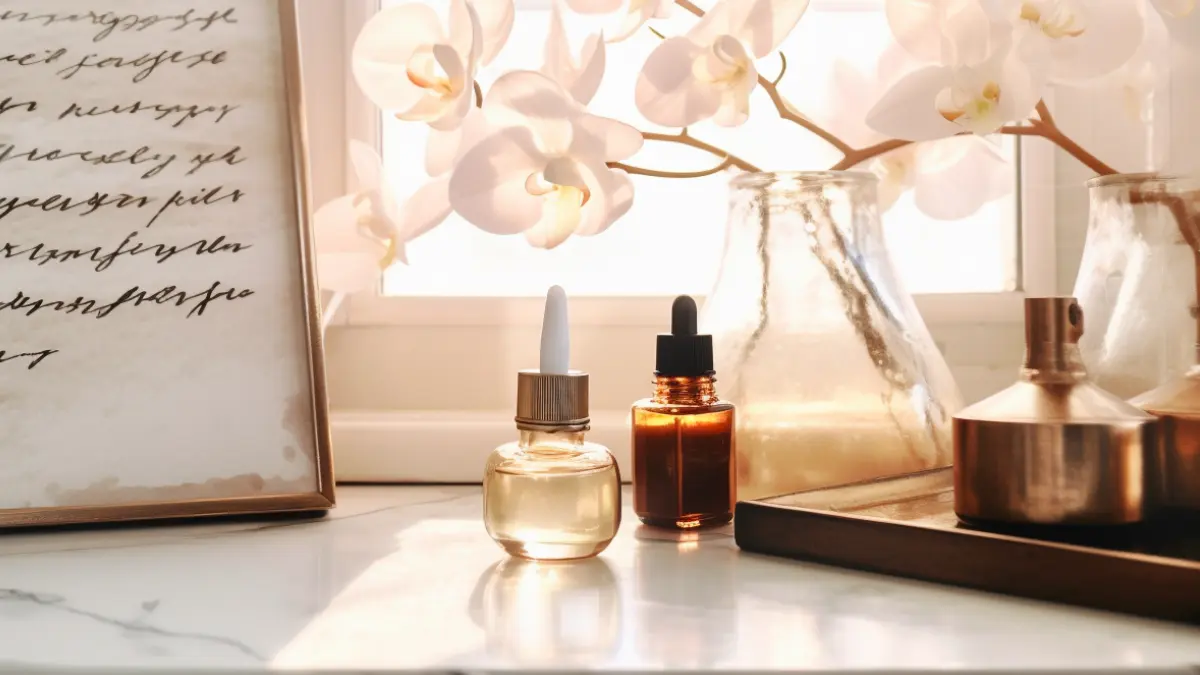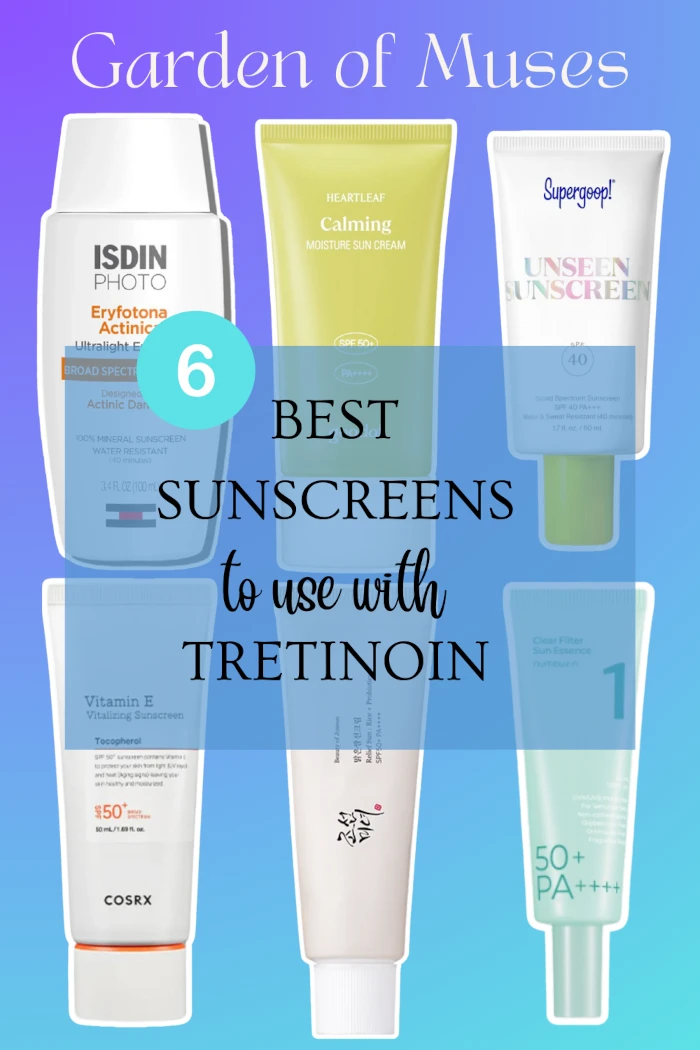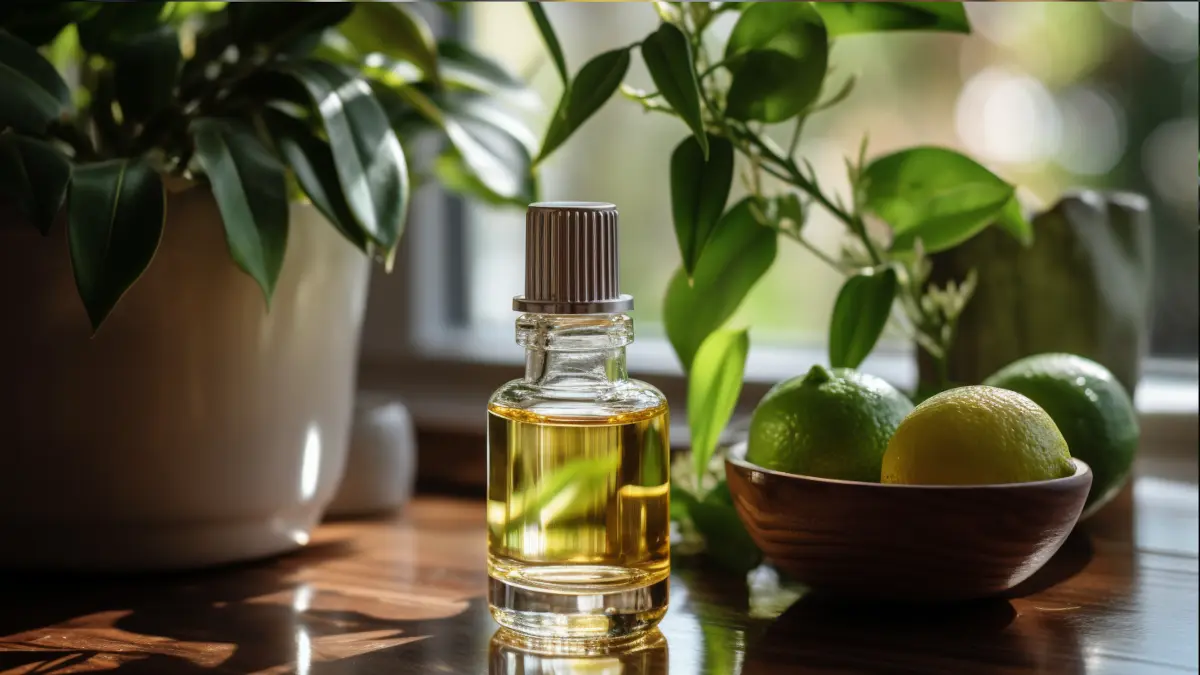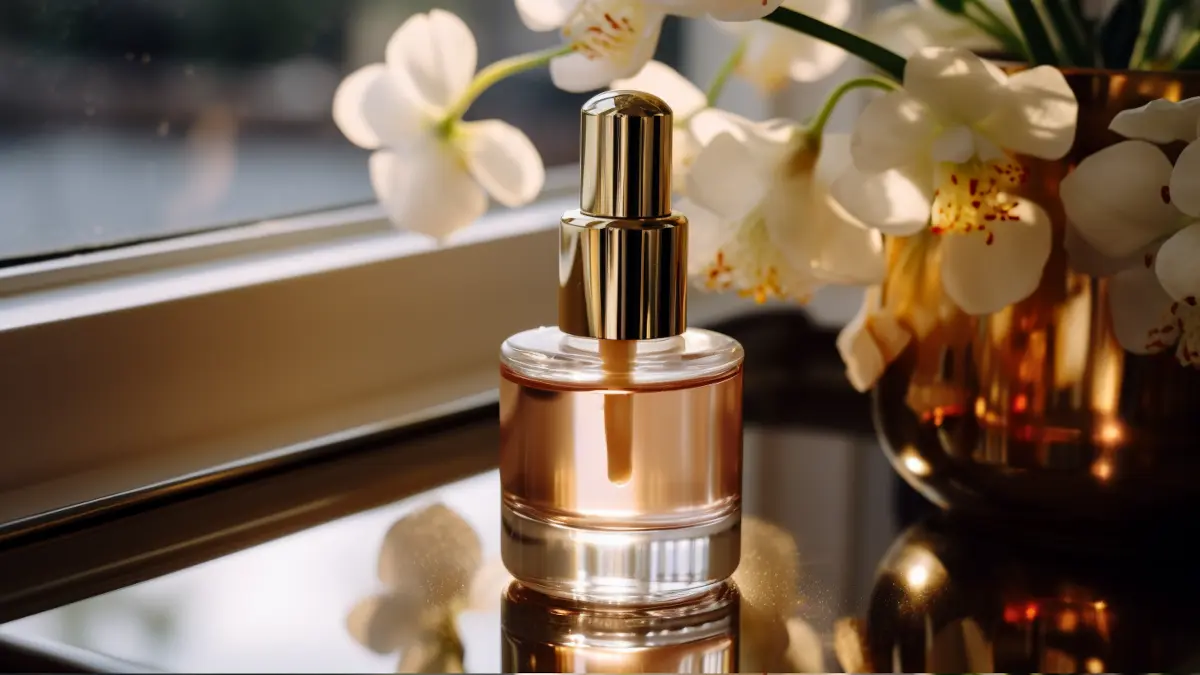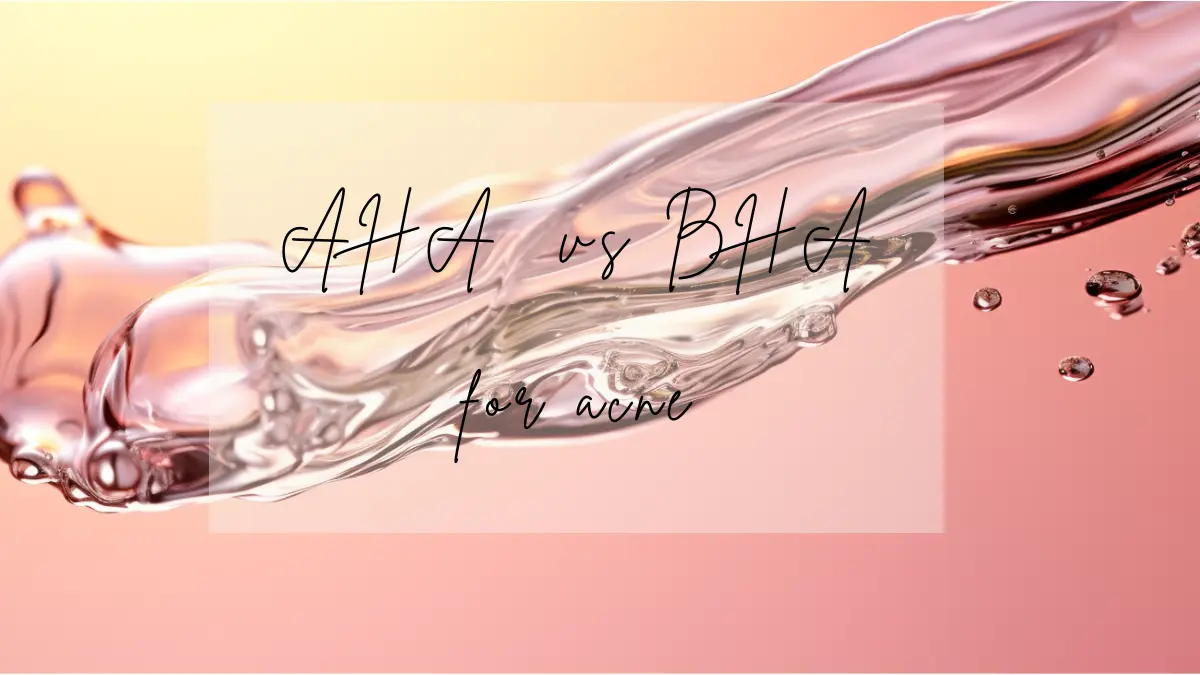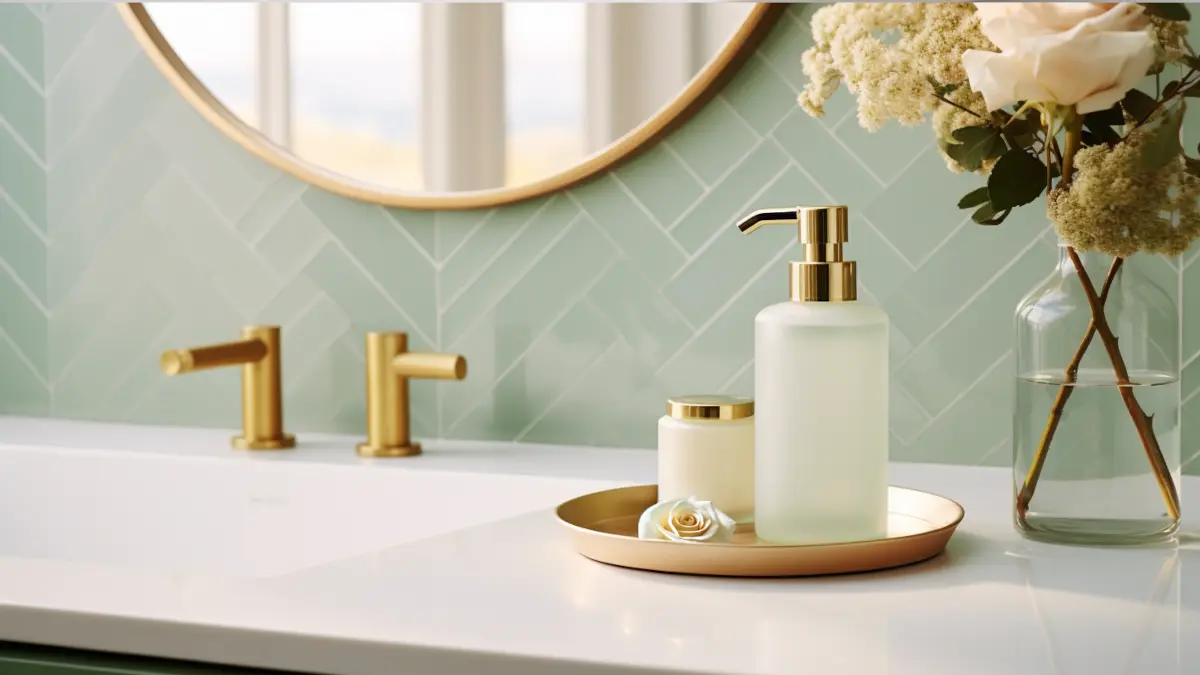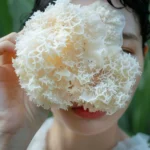Niacinamide and vitamin C are the most widely studied and effective skincare ingredients. They both have multiple benefits for your skin, particularly regarding antiaging and hyperpigmentation.
Many people fear using niacinamide and vitamin C in their skincare routine. This is because some believe that using them simultaneously renders them both ineffective due to them canceling each other chemically. This idea probably stems from the fact that vitamin C (L-ascorbic acid) is a complicated ingredient to formulate products with as it is precarious. It oxidizes quickly in the presence of oxygen, light, and heat.
I assure you that you can layer your niacinamide-containing products with your vitamin C serum. I will also guide you on using these highly effective ingredients in your skincare routine. So read on if you want brighter, radiant, smoother, and younger-looking skin!
A Guide To Using Niacinamide and Vitamin C Together in Your Skincare Routine:
- Niacinamide Skin Benefits
- Vitamin C Skin Benefits
- Do Niacinamide and Vitamin C Cancel Each Other Out Chemically?
- What Effects Does Niacinamide Ascorbate Have On The Skin?
- Does Mixing Niacinamide and Vitamin C Produce Niacin?
- Can I Use Niacinamide and Vitamin C Together in My Skincare Routine?
- Guide to Layering Vitamin C and Niacinamide
- What Products Contain Niacinamide And Vitamin C?
- Which To Apply First In Your Skincare Routine?
- How Long Should I Wait after Applying My Vitamin C Serum?
- Do I Need a Dedicated Niacinamide Serum or Booster?
- Can I Use Niacinamide, Vitamin C, and Hyaluronic Acid Together?
- Can I Use Niacinamide, Vitamin C, and AHA Together?
- Can I Use Niacinamide, Vitamin C, and Retinol Together?
- Bottom Line
Niacinamide Skin Benefits

Niacinamide (aka vitamin B3) is a standout skincare ingredient because it is well tolerated by almost any skin type and highly effective at penetrating the skin. Through its antioxidant capabilities, niacinamide can provide a broad range of improvements in the appearance of your skin, including:
- The reduction of fine lines and wrinkles by increasing dermal collagen and protein production;
- Improve hyperpigmentation such as melasma, sun spots, and post-inflammatory hyperpigmentation by reducing melanosome transfer from melanocytes to keratinocytes (epidermal skin cells);
- Improvements in the epidermal barrier function resulting in reduced trans-epidermal water loss and an increase in the skin’s resistance to potentially harmful topical agents;
- Reduction in the yellowing of skin by inhibiting oxidative processes;
- Decrease in skin redness (erythema) due to increases in skin barrier function;
- Improvements in skin tone are also due to increases in skin barrier function;
- Reduction in pore size through mechanisms not yet clearly understood;
- Decline in sebum production;
- Moderate to severe forms of acne are improved due to niacinamide’s anti-inflammatory properties, which reduce swelling and redness.
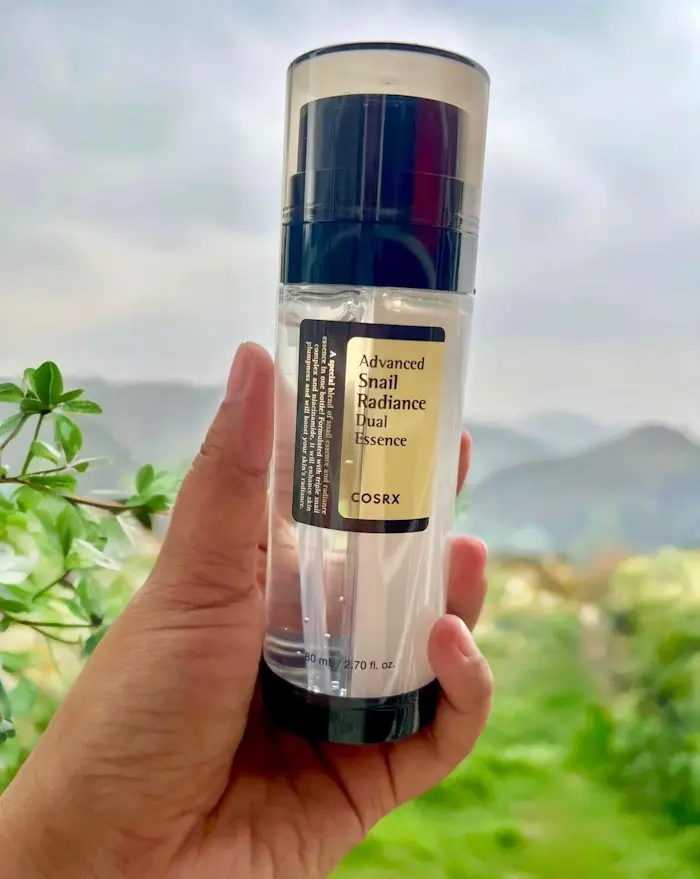
The COSRX Advanced Snail Radiance Dual Essence contains 5% niacinamide and 74.3% snail mucin.
COSRX Advanced Snail Radiance Dual Essence Ingredients List (last checked 2025)
Snail Secretion Filtrate, Butylene Glycol, Niacinamide, 1,2-Hexanediol, Betaine, Panthenol, Water, Glycerin, Limnanthes Alba (Meadowfoam) Seed Oil, Helianthus Annuus (Sunflower) Seed Oil, Allantoin, Carbomer, Macadamia Ternifolia Seed Oil, Sodium Polyacrylate, Sodium Hyaluronate, Inulin Lauryl Carbamate, Arginine, Argania Spinosa Kernel Oil, Xanthan Gum, Sodium Surfactin, Ethylhexylglycerin, Glutathione.
Ingredients referred from COSRX’s official website.
Active Humectant/Moisturizing Emollient Herb
Vitamin C Skin Benefits
Just like niacinamide, vitamin C, in the form of L-ascorbic acid, is a powerful antioxidant that has been shown to penetrate the dermis layer of the skin easily. Including a vitamin C serum in your skincare routine can provide several impressive benefits to your skin, including:

- Reductions in hyperpigmentation such as melasma, sun spots, and post-inflammatory hyperpigmentation by inhibiting the production of melanin;
- Prevention of sun damage caused by ultraviolet light (AKA photo-aging) by fighting free radicals;
- Increasing the production of collagen, thereby diminishing fine lines and giving firm, youthful skin;
- Also, decreasing the degradation of collagen;
- Protecting the skin from environmental pollutants, thereby preventing visible signs of aging.
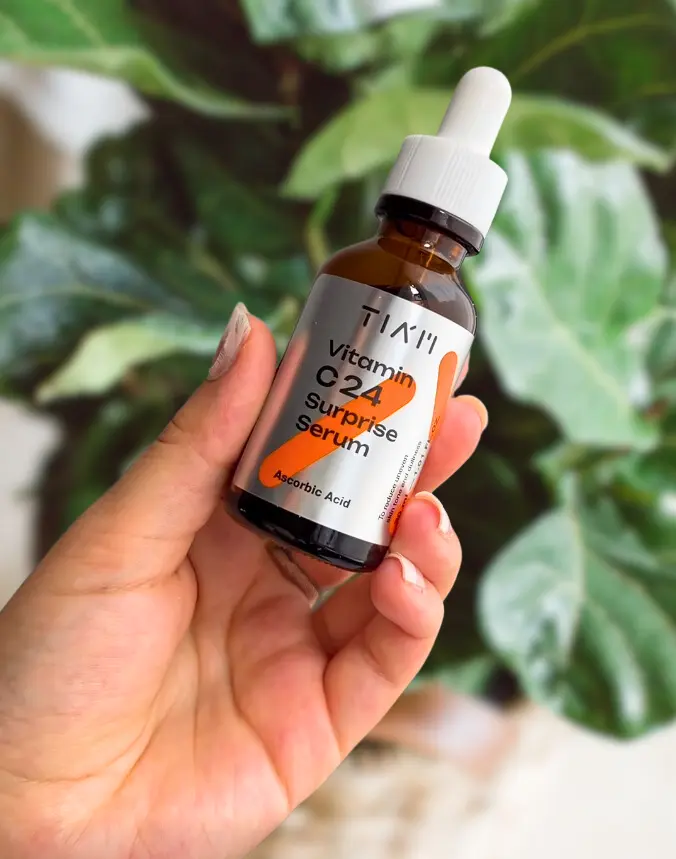
Tia’m Vitamin C24 Surprise Serum contains a high concentration of pure Vitamin C – 22% pure Vitamin C and a 2% Vitamin C derivative. It is designed to maximize the benefits of Vitamin C while minimizing the risk of irritation. It contains vitamin E and Ferulic Acid.
Tia’m Vitamin C24 Surprise Serum Ingredients List (last checked 2025)
Propanediol, Ascorbic Acid (22%), Ethyl Ascorbyl Ether, Glycerin, Dipropylene Glycol, Pentylene Glycol, Butylene Glycol, Potassium Hydroxide, Madecassoside, Glutathione, Ferulic Acid, Carnitine, Pyridoxine, Biotin, Inositol, Folic Acid, Tocopherol.
Active Herbs Humectant/Moisturizing
Do Niacinamide and Vitamin C Cancel Each Other Out Chemically?
No, vitamin C and niacinamide do not neutralize each other when used together in your skincare routine. The belief that these two ingredients cancel each other out chemically stems from combining these two clear liquids, forming a yellow liquid.
Some people say that the color change results from instantaneously oxidizing vitamin C. However, both ingredients undergo a charge transfer to form niacinamide ascorbate. In this chemical reaction, an electron is transferred from L-ascorbic acid to niacinamide, which weakly holds the two together.
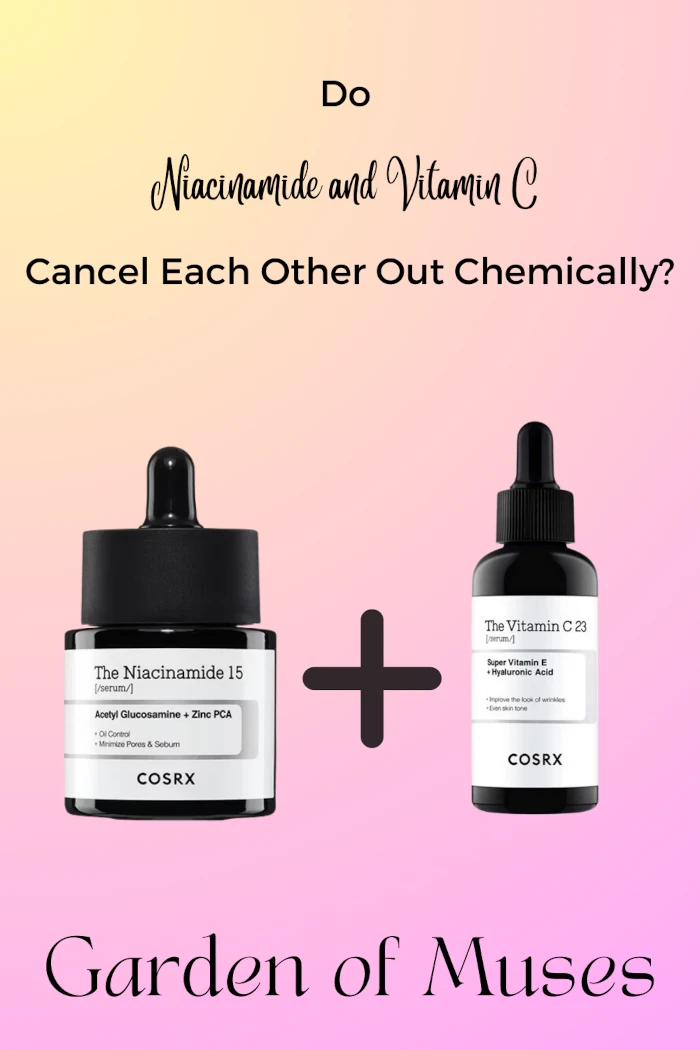
What Effects Does Niacinamide Ascorbate Have On The Skin?
Currently, the research that has been conducted on the dermatological effects of niacinamide ascorbate suggests that it is safe to use and still works to brighten the skin. Research has also shown that this complex is easily reversed and separated.

This is because niacinamide ascorbate forms at a pH of 3.8. Although the surface of our skin is acidic, the pH becomes less and less acidic as you move to each deeper layer – eventually reaching a neutral pH of 7. So, as niacinamide ascorbate penetrates the skin, the weak bond holding niacinamide and L-ascorbic acid together breaks, and you’re left with niacinamide and L-ascorbic acid again.
Does Mixing Niacinamide and Vitamin C Produce Niacin (aka Nicotinic Acid)?
The likelihood that niacinamide can hydrolyze into niacin (AKA nicotinic acid) when combined with vitamin C, leading to redness and flushing, is extremely low. Research has shown that niacinamide only converts to nicotinic acid in very minute amounts when placed under extreme heat for extended periods. So, for any conversion to nicotinic acid, you would likely have to store your skincare products in a car in the hot summer for weeks.
Can I Use Niacinamide and Vitamin C Together in My Skincare Routine?
Yes, in most cases, the skin will benefit from the excellent antioxidant properties of niacinamide and vitamin C without causing any adverse effects.
The idea that niacinamide and vitamin C shouldn’t be mixed is due to misinformation and studies from the 1960s that were incorrectly interpreted. Much research has been conducted since then, suggesting that using both ingredients in your skincare routine is indicated.
If, however, you have sensitive skin and are worried about the effects of using two active ingredients on your skin, then you could try the following:
- Alternate your niacinamide and vitamin C-containing products morning to evening or daily.
- Use a vitamin C serum formulated with a vitamin C derivative instead of L-ascorbic acid, as they tend to be gentler on the skin.
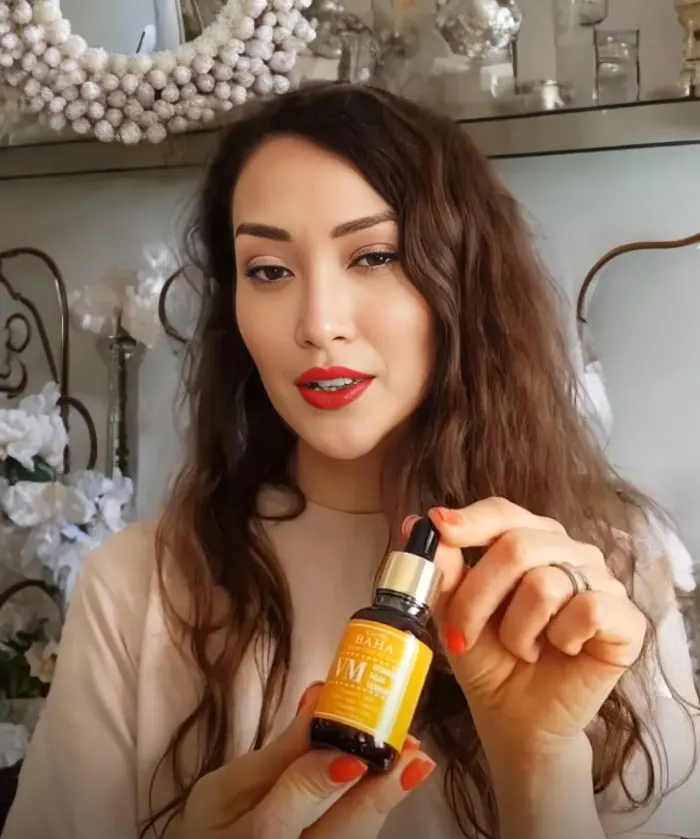
My favorite is Cos De Baha VM Vitamin C MSM, formulated with sodium ascorbyl phosphate, a derivative of L-ascorbic acid. It is also very affordable!
A Quick Guide to Layering Vitamin C and Niacinamide in Your Skincare Routine
So now you know that you can use niacinamide and vitamin C in your skincare routine, but how do you layer products containing these two ingredients, and which should you apply first? I’ve created a short guide for you.
What Products Contain Niacinamide And Vitamin C?
Niacinamide can be found in many different skincare products, although you’re most likely to find the highest concentrations in serums. Toners and moisturizers will often contain niacinamide.
Vitamin C (L-ascorbic acid) is mainly limited to specially formulated vitamin C serums. This is because L-ascorbic acid is a finicky skincare ingredient that oxidizes quickly and requires a pH below 3.5 to penetrate our skin.
1. COSRX The Vitamin C 23 Serum
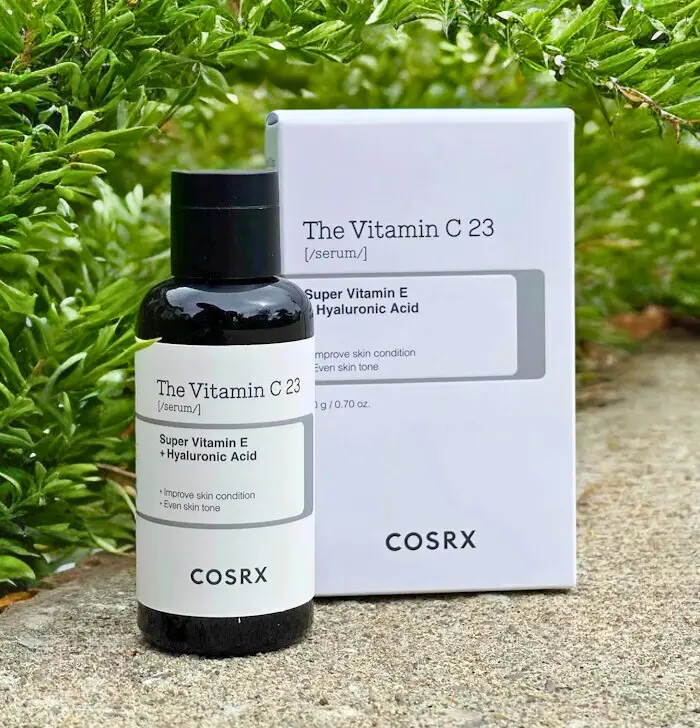
Please read Mateo’s in-depth review of the COSRX The Vitamin C 23 Serum.
COSRX The Vitamin C 23 Serum Ingredients List (last checked 2025)
Water, Ascorbic Acid (23%), Propanediol, Dimethicone, Tromethamine, Panthenol, Ethyl Ascorbyl Ether, Squalane, Caffeine, Sodium Chloride, Sodium Hyaluronate, Sodium Sulfite, Disodium EDTA, Glutathione, Adenosine, Acetyl Glucosamine, Gardenia Florida Fruit Extract, Allantoin, Dextrin, Tocotrienols, Tocopherol, Elaeis Guineensis (Palm) Oil, Butylene Glycol, Arginine, Niacinamide, Pentylene Glycol, Alcohol Denat, Helianthus Annuus (Sunflower) Seed Oil, Glycyrrhiza Glabra (Licorice) Root Extract, Methyl Trimethicone, Carthamus Tinctorius (Safflower) Seed Oil, Camellia Japonica Seed Oil, Daucus Carota Sativa (Carrot) Root Extract, Beta-Carotene.
Active Herbs Humectant/Moisturizing Brightening Possible irritant Fragrance
2. SKIN & LAB Vitamin C Brightening Serum
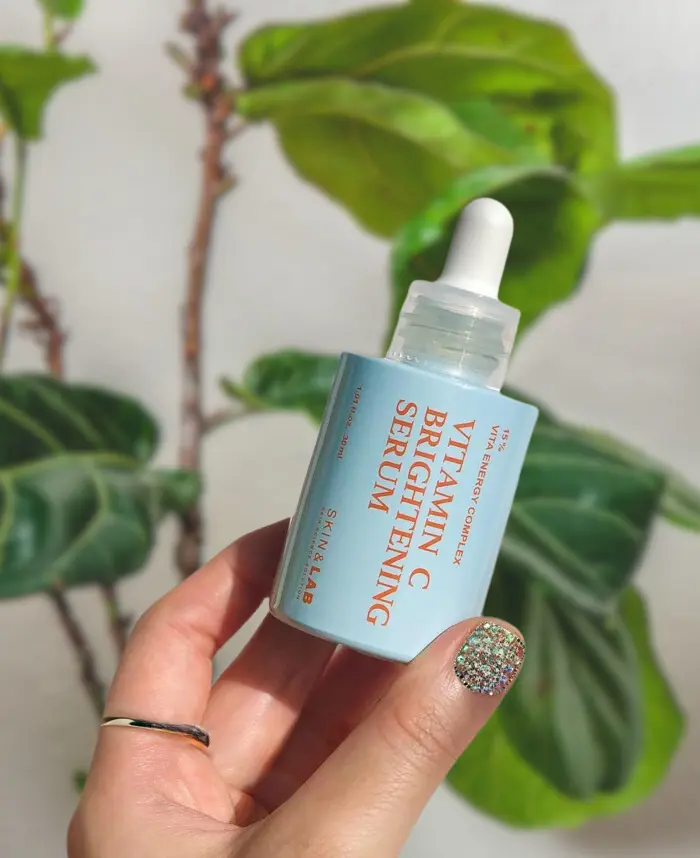
If you are sensitive to Pure Vitamin C, I highly recommend the SKIN & LAB Vitamin C Brightening Serum. It is a Vitamin C derivative-based serum aimed to help brighten and even out skin tone.
Its 15% Vita Energy Complex comprises 3-O Ethyl Ascorbic Acid plus a blend of vitamins. You’ll notice some bubble capsules in this serum, packed with antioxidants to boost healthy, youthful skin. It contains 19 hydrating ingredients, including the most effective humectants, five types of Hyaluronic Acid, Glycerin, and Urea. Other notable ingredients include Niacinamide, Panthenol, and Peptides (Matrixyl 3000).
I have noticed that my skin looks healthier and more radiant. I think that it is attributed to this serum because I haven’t been using any other new brightening products apart from this recently.
I highly recommend this to those who want to start incorporating vitamin C into their routine or those who can’t tolerate pure L-Ascorbic acid!
SKIN & LAB Vitamin C Brightening Serum Ingredients List (last checked 2025)
Water, Methylpropanediol, Propanediol, Glycerin, 1,2-Hexanediol, Niacinamide, Betaine, 3-O-Ethyl Ascorbic Acid(15000Ppm), Tocopheryl Acetate, Panthenol, Bifida Ferment Lysate, Chlorella Vulgaris Extract, Sodium Hyaluronate, Melia Azadirachta Flower Extract, Melia Azadirachta Leaf Extract, Hydrolyzed Hyaluronic Acid, Curcuma Longa (Turmeric) Root Extract, Ocimum Sanctum Leaf Extract, Corallina Officinalis Extract, Hyaluronic Acid, Hydrolyzed Collagen, Sodium Hyaluronate Crosspolymer, Hydroxyethyl Urea, Glucose, Hydrolyzed Glycosaminoglycans, Trehalose, Butylene Glycol, Fructooligosaccharides, Fructose, Tromethamine, Benzyl Glycol, Adenosine, Sodium Citrate, Sodium Phytate, Citric Acid, Ethylhexylglycerin, Polysorbate 20, Palmitoyl Tripeptide-1, Palmitoyl Tetrapeptide-7, Ascorbic Acid(106.05Ppb), Biotin, Cyanocobalamin, Folic Acid, Pantothenic Acid, Pyridoxine, Riboflavin, Thiamine Hcl, Bioflavonoids, Glutathione, Linoleic Acid, Menadione, Retinol, Tocopherol, Carbomer, Xanthan Gum.
Active Herbs Humectant/Moisturizing Ferments Brightening
3. Numbuzin No. 5 Goodbye Blemish Serum
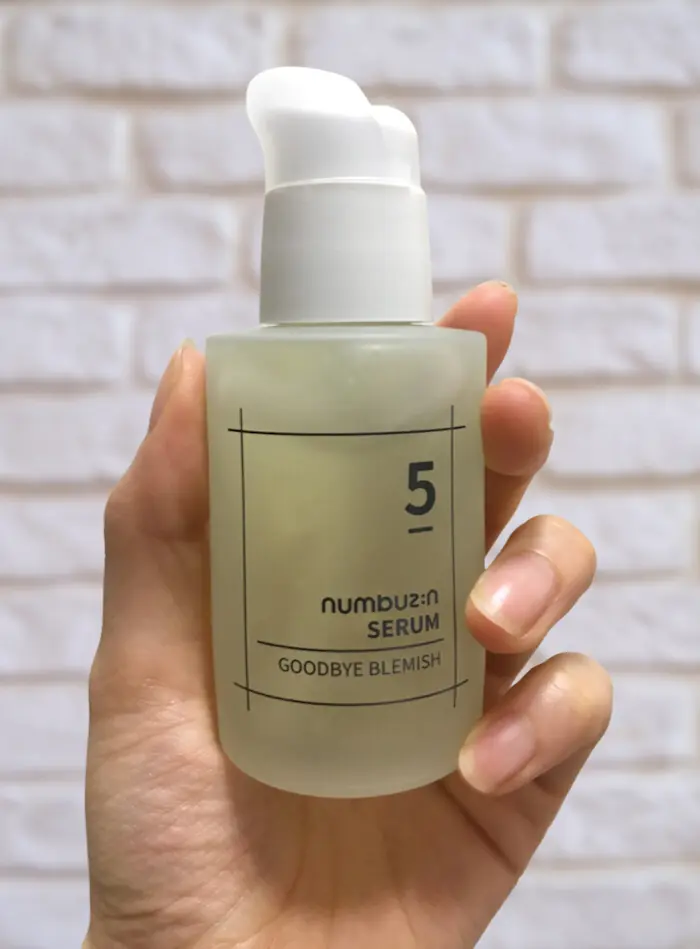
Numbuzin No. 5 Goodbye Blemish Serum claims to fight the visible signs of aging and brightens and restores moisture to the skin. The mild formula minimizes irritation and leaves a non-greasy finish.
The star ingredient, sea buckthorn extract (listed as Hippophae Rhamnoides Extract), is a berry that grows on a shrub-like tree. It is rich in natural AHA-like components like malic and acetic acids, flavonoids, vitamin C, and essential fatty oils. Topical application can help to heal wounds, provide antioxidizing benefits, reduce collagen depletion, and even out your skin. Sea buckthorn oil is also loved by many fans, especially those with dry and mature skin, for its anti-aging and nourishing properties.
This, coupled with niacinamide and licorice root extract, will help to even out the skin, making it fairer and brighter.
Please read Seo-Yeon’s review of the Numbuzin No. 5 Goodbye Blemish Serum.
Numbuzin No. 5 Goodbye Blemish Serum Ingredients List (last check 2025)
Hippophae Rhamnoides Extract, Butylene Glycol, Methyl Gluceth-20, Dipropylene Glycol, Glycerin, 1,2-Hexanediol, Niacinamide, Melia Azadirachta Flower Extract, Ocimum Sanctum Leaf Extract, Melia Azadirachta Leaf Extract, Curcuma Longa (Turmeric) Root Extract, Corallina Officinalis Extract, Citrus Limon (Lemon) Peel Oil, Citrus Aurantium Dulcis (Orange) Peel Oil, Citrus Aurantifolia (Lime) Oil, Polygonum Cuspidatum Root Extract, Scutellaria Baicalensis Root Extract, Camellia Sinensis Leaf Extract, Glycyrrhiza Glabra (Licorice) Root Extract, Chamomilla Recutita (Matricaria) Flower Extract, Rosmarinus Officinalis (Rosemary) Leaf Extract, Centella Asiatica Extract, Ascorbyl Glucoside, Ascorbic Acid, 3-O-Ethyl Ascorbic Acid, Panthenol, Sodium Hyaluronate, Dipotassium Glycyrrhizate, Glycereth-26, Ammonium Acryloyldimethyltaurate/VP Copolymer, Polyglyceryl-10 Laurate, Carbomer, Allantoin, Tromethamine, Water, Hydrolyzed Jojoba Esters, Disodium EDTA, Citral, Limonene.
Active Humectant/Moisturizer Herbs Fragrance Brightening
Which to Apply First in Your Skincare Routine?
Suppose you are using a vitamin C serum formulated with L-ascorbic acid. In that case, you should use this first (after cleansing) since L-ascorbic acid is pH-dependent and requires a pH below 3.5 to penetrate the skin. Any hydrating toners, essences, serums, or moisturizers containing niacinamide can then be layered on top.
The order of these products, therefore, looks like this:
OIL CLEANSER > WATER-BASED CLEANSER > pH-ADJUSTING TONER > VITAMIN C SERUM > BHA (if using) > AHA > FIRST ESSENCE > HYDRATING TONER > ESSENCE > SERUMS & AMPOULES> MOISTURIZER > FACIAL OIL > SUNSCREEN (AM) OR SLEEPING PACK (PM)
TIP! You can apply a vitamin C serum either in the morning or evening. However, most prefer using it during their morning routine due to its photo-protective effects.
You may also find that some cleansers contain niacinamide. It’s okay to use a cleanser containing niacinamide before you apply your vitamin C serum because niacinamide won’t alter your skin’s pH. I always recommend using a low pH cleanser (with a pH below 5.5) to help L-ascorbic acid penetrate your skin and also help maintain a healthy moisture barrier.
Want to Learn More about Vitamin C in Skincare?
How Long Should I Wait after Applying My Vitamin C Serum?
If your vitamin C serum is formulated with L-ascorbic acid, it’s generally recommended to wait at least 15 minutes before applying other skincare products. L-ascorbic acid requires a pH below 3.5 to penetrate the skin. This is especially the case if you’re using other skincare acids (such as AHA or BHA), as the pH of these products will be higher than your vitamin C serum.
Do I Need a Dedicated Niacinamide Serum or Booster?
No, you don’t need to include a dedicated niacinamide serum or booster in your skincare routine, as many skincare products (especially serums and moisturizers) already contain niacinamide. Generally, the concentration of niacinamide in these products is 2-5%, which is enough to give you the benefits niacinamide promises.
Can I Use Niacinamide, Vitamin C, and Hyaluronic Acid Together?
You can use niacinamide, vitamin C, and hyaluronic acid in your skincare routine. This trio provides your skin with both anti-aging and hydration benefits, as hyaluronic acid is a powerful humectant that attracts water molecules to the skin.
Luckily, many Korean skincare products contain hyaluronic acid (or its cousin, sodium hyaluronate) and other humectants which are all about keeping the skin hydrated and the skin barrier healthy.
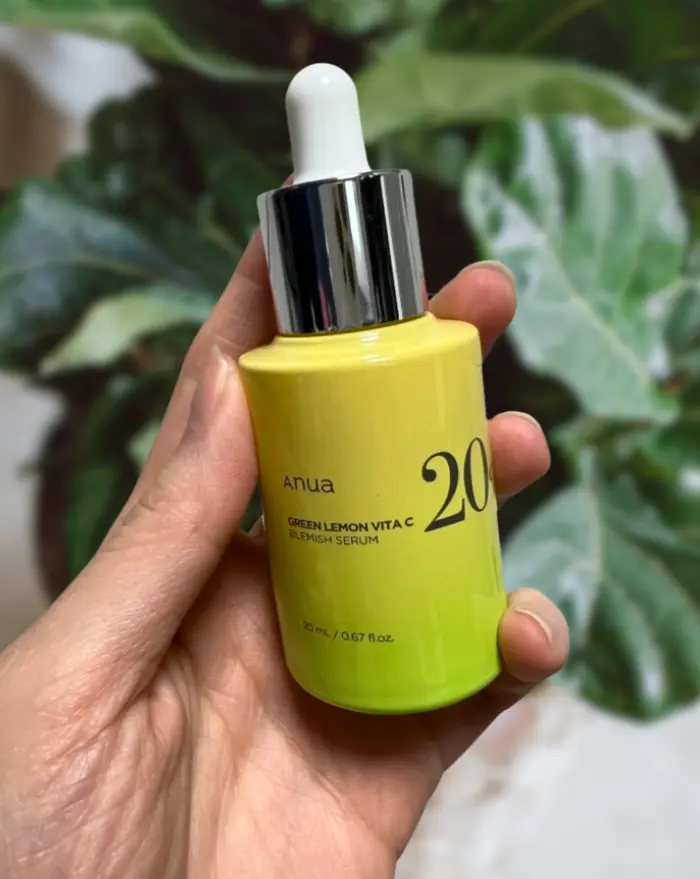
That said, Anua Green Lemon Vitamin C Blemish contains the optimal concentration of pure vitamin C -20%, vitamin E, Ferulic Acid, niacinamide, and four types of hyaluronic acid in its formulation.
Anua Green Lemon Vitamin C Blemish Serum Ingredients List (last checked 2025)
Citrus Limon (Lemon) Fruit Extract (560,000 Ppm), Ascorbic Acid (200,000 Ppm), Propanediol, Butylene Glycol, Dipropylene Glycol, Cyclopentasiloxane, 1,2-Hexanediol, Cyclohexasiloxane, Sodium Hydroxide, C12-14 Alketh-12, Alpha-Bisabolol, Sodium Polyacryloyldimethyl Taurate, Water, Polyacrylate Crosspolymer-6, Dimethicone/Vinyl Dimethicone Crosspolymer, Xanthan Gum, Ethylhexylglycerin, Allantoin, Glycerin, Glutathione, Citrus Aurantium Dulcis (Orange) Flower Oil, Litsea Cubeba Fruit Oil, Adenosine, Citrus Paradisi (Grapefruit) Peel Oil, Disodium EDTA, Citrus Aurantium Bergamia (Bergamot) Fruit Oil, Mentha Viridis (Spearmint) Leaf Oil, Tocopherol, Ferulic Acid, Barosma Betulina Leaf Extract, N-Butyl Alcohol, Hydrogenated Lecithin, Polyglyceryl-10 Stearate, Sorbitol, Panthenol, Beta-Glucan, Sodium Hyaluronate, Sodium Ascorbyl Phosphate, Caprylic/Capric Triglyceride, Helianthus Annuus (Sunflower) Seed Oil, Hyaluronic Acid, Sucrose Stearate, Glyceryl Stearates, Beta-Carotene, Sodium Hyaluronate Crosspolymer, Niacinamide, Hydrolyzed Sodium Hyaluronate, Hydrolyzed Hyaluronic Acid, Thioctic Acid, Lycopodium Clavatum Extract, Thioctic Acid, Lycopodium Clavatum Extract, Equisetum Arvense Extract, Sodium Acetylated Hyaluronate, Pyridoxine, Hydroxypropyltrimonium Hyaluronate, Folic Acid, Biotin, Ceramide NP, Ubiquinone, Cyanocobalamin, Thiamine Hcl, Riboflavin, Linoleic Acid, Hesperidin, Ergothioneine, Limonene, Linalool, Citral.
Active Herbs Humectant/Moisturizing Emollient Brightening Essential Oils & Fragrance
Can I Use Niacinamide, Vitamin C, and AHA Together?
You can use niacinamide, vitamin C, and AHA (alpha-hydroxy acids) in your skincare routine. However, the order in which you apply them is essential as vitamin C and AHAs are both acids that require different pH to penetrate the skin. The strength and how often you use your AHA depends on your skin sensitivity.
It also takes a little while to build up a tolerance to products containing L-ascorbic acid (vitamin C) and AHAs, so start introducing them slowly (applying them every few days) and work your way up to daily or every other day from there.
The order in which you should apply these products is as follows:
OIL CLEANSER > WATER-BASED CLEANSER > pH-ADJUSTING TONER > VITAMIN C SERUM > BHA (if using) > AHA > FIRST ESSENCE > HYDRATING TONER > ESSENCE > SERUMS & AMPOULES> MOISTURIZER > FACIAL OIL > SUNSCREEN (AM) OR SLEEPING PACK (PM)
Note: You don’t have to use all these steps in your skincare routine. I’ve listed the order they would go in if you were using all of them. Niacinamide is typically found in essences, serums, ampoules, and moisturizers.
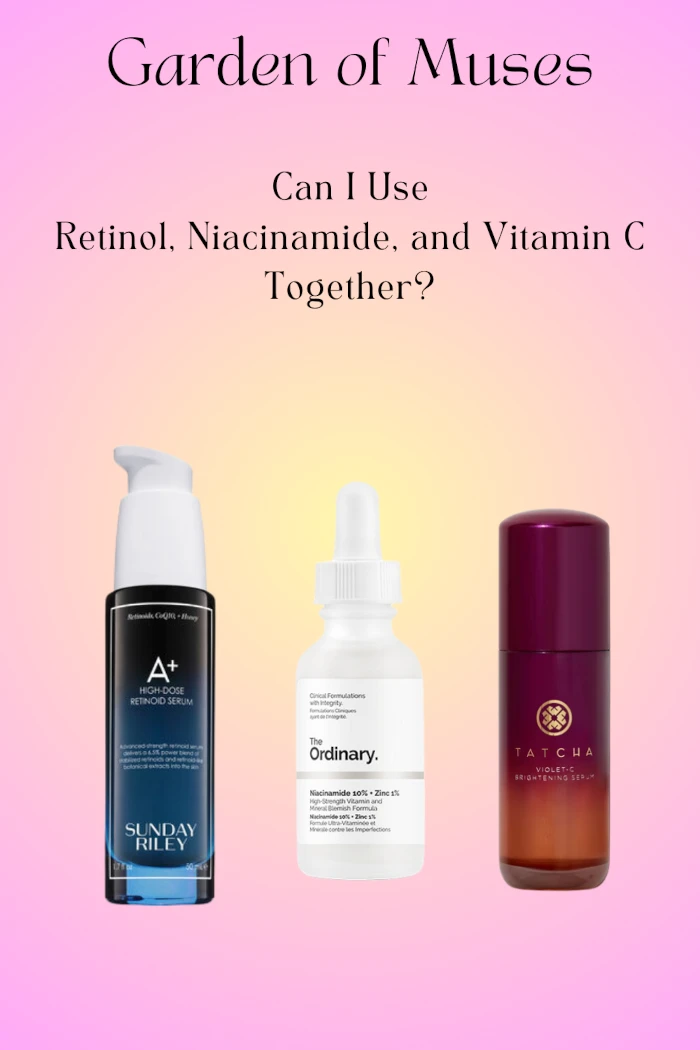
Can I Use Niacinamide, Vitamin C, and Retinol Together?
You can use niacinamide, vitamin C, and retinol in your skincare routine. All three ingredients are probably the most effective antioxidants for your skin, especially regarding anti-aging concerns. However, your skin will need time to build a tolerance to them before using them daily. You may not be able to use a vitamin C serum containing L-ascorbic acid and retinol if you have very sensitive skin.
Dermatologists also recommend applying your vitamin C serum in the morning and retinol product in the evening.
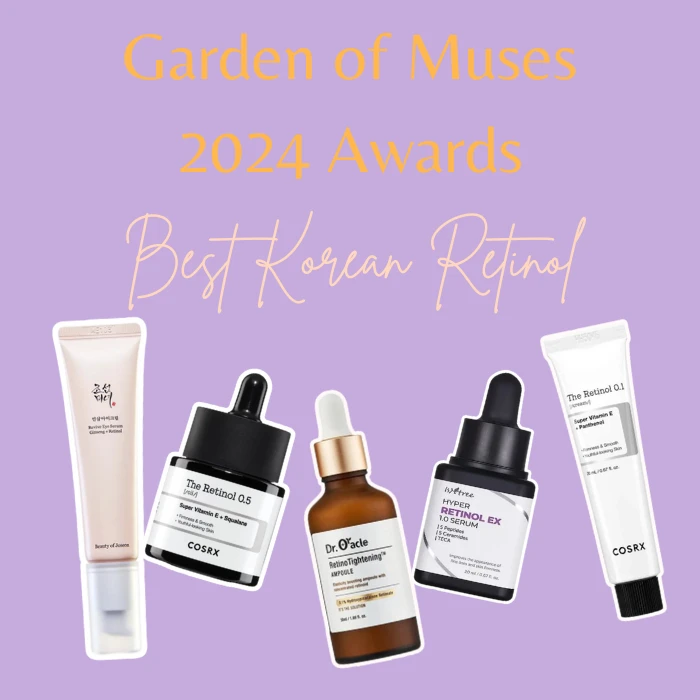
Bottom Line
Niacinamide and vitamin C are two of the most beneficial ingredients for the skin. Both are highly effective at fading hyperpigmentation and have anti-aging properties.
Niacinamide has many other benefits and is well tolerated by most skin types. It is okay to use both ingredients in your skincare routine! Remember to apply your vitamin C serum after cleansing at the start of your skincare routine, as vitamin C requires a low pH to penetrate the skin.
Show Me Proof
- Bissett, Donald L., John E. Oblong, and Cynthia A. Berge. “Niacinamide: AB vitamin that improves aging facial skin appearance.” Dermatologic surgery 31 (2005): 860-866.
- Bissett, D. L., K. Miyamoto, P. Sun, J. Li, and C. A. Berge. “Topical niacinamide reduces yellowing, wrinkling, red blotchiness, and hyperpigmented spots in aging facial skin 1.” International journal of cosmetic science 26, no. 5 (2004): 231-238.
- Hakozaki, T., L. Minwalla, J. Zhuang, M. Chhoa, A. Matsubara, K. Miyamoto, A. Greatens, G. G. Hillebrand, D. L. Bissett, and R. E. Boissy. “The effect of niacinamide on reducing cutaneous pigmentation and suppression of melanosome transfer.” British Journal of Dermatology 147, no. 1 (2002): 20-31.
- Bissett, Donald. “Topical niacinamide and barrier enhancement.” Cutis 70, no. 6 (2000): 8-12.
- Draelos, Zoe Diana, Keith Ertel, and Cindy Berge. “Niacinamide-containing facial moisturizer improves skin barrier and benefits subjects with rosacea.” CUTIS-NEW YORK- 76, no. 2 (2005): 135.
Read Next
AHA vs. BHA for Acne – Which Is Better?

